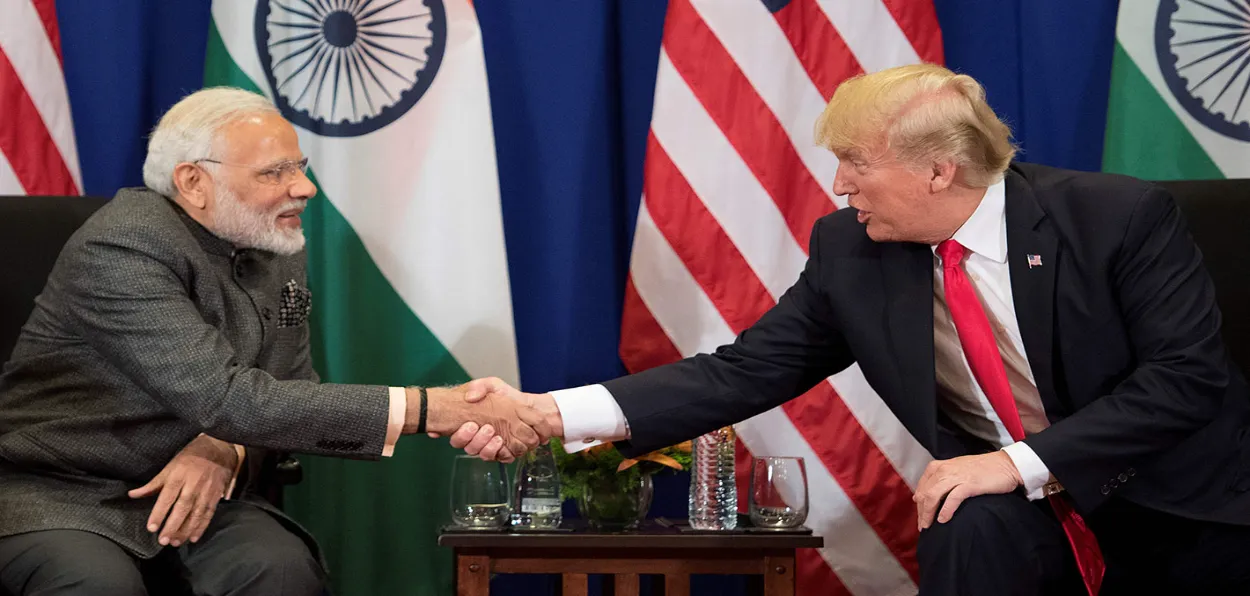
 Sushma Ramachandran
Sushma Ramachandran
The India-U.S. trade deal is still a blip on the horizon. Even as officials on both sides repeatedly say it is nearly a done deal, it has yet to become a reality. The prolonged delay reflects the fissures in relations between the two countries, which appeared to be strategic allies not so long ago. Recently, U.S. President Donald Trump has begun renewing a message of friendship with Prime Minister Narendra Modi, but these words have come rather late in the day, as bilateral relations seem to have come under a permanent cloud.
It is not just the trade issue that has led to growing tensions. Several policy measures taken by the Trump administration are designed to target India. Foremost among these is the decision to levy a high charge for grant of H1B visas which has a dampening effect on U. S. tech companies that rely on talent coming from India. The visas will now cost 100,000 dollars initially. It is well known that over 70 per cent of the visas are for Indians. So it looks as if the measure was aimed at only this segment of visa seekers.
At the same time, the companies affected are largely American. This includes Amazon, which tops the list of visa sponsors with 10,000 in 2025. It is followed by TCS with 5500, while the other Indian firms like Infosys do not even figure in the top ten.
The impact of these moves will curb the flow of India’s best and brightest scientific and engineering talent to Silicon Valley, an arena where the environment is conducive to innovation. The rationale for the high cost is apparently to promote hiring of more Americans, but this is not likely to be the outcome. The reason is that the U.S. simply does not have enough graduates in the STEM (science, technology, engineering, mathematics) stream.
In fact, it could have the reverse effect of creating more jobs in this country as those denied visas may be hired here to do work remotely.
The other hostile moves include raising the cost of H1B visas and repeated demands by Trump and his top aides that India stop buying Russian oil. The argument that these purchases are providing resources for Russia’s war against Ukraine is clearly specious, given that there has been no criticism of the biggest buyer, China.
Strangely enough, Russian oil was not mentioned at all in the Trump-Xi summit in South Korea. During media interactions, Trump simply said the subject had not come up during the discussions. Other media reports hinted that the issue had been raised, but there was no response from the Chinese side.
The double standards on the issue of oil have been stark and have highlighted efforts to browbeat this country. The singling out of India has been made even more evident by the latest exemption given to Hungary, allowing it to buy Russian oil. The waiver has been given for one year, according to the U.S. authorities, while Hungary has claimed that this will be a permanent exemption.
The biggest area of friction, however, remains the issue of trade. It is this element that has had the greatest impact on the dip in India-U.S. ties. There has been considerable resentment over the arbitrary manner in which tariffs have been finalised for countries that are competitors in the American market. Notably, tariffs on China’s goods have been brought to 47 per cent after the Trump- Xi summit.
Pakistan is already at 19 per cent. Other countries in the region, like Vietnam, are at 20 per cent, with Malaysia and Indonesia at 19 per cent. This leaves India with a whopping 50 per cent tariff, of which 25 per cent is a punitive levy for importing Russian oil.
The impact of the 50 per cent tariffs is already being felt in terms of reduced exports to the U.S. Latest reports say air cargo shipments have fallen to a nine-year low, as tariffs have made goods unaffordable for buyers. Jobs are also expected to be hit in labour-intensive industries like textiles, gems and jewellery and handicrafts.
In the backdrop of these worsening relations, New Delhi and Washington renewed a ten-year defence framework pact. But the much-vaunted Quad grouping, along with Australia and Japan, seems to be on shaky ground, with the summit planned to be held in India having been postponed for the time being.
India-U.S. ties are thus stretched to the breaking point. The reasons for the creation of tensions between the two countries that seemed headed to be long-term strategic partners are, on the surface, unfathomable. The differences seem to have been created by whimsical decisions taken by Donald Trump. Many causes have been identified for the hostility shown to India by him and his team. These include the interest in crypto-currency deals linked to Pakistan and ire over New Delhi’s refusal to give him credit for resolving the conflict between the two neighbours.
Yet none of these reasons is based on a long-term vision for a deeper economic and strategic partnership between the two countries. The Trump administration thus seems to have jettisoned a relationship that could have emerged as a powerful alliance on the global stage. As for India, it has rightly taken the approach that the declining relationship with the U.S. needs to be shored up by deepening ties with other economic and strategic players. It has thus moved to enter into FTAs with a host of countries while looking forward to deepening ties yet again with Russia.
ALSO READ: Uvais Ali Khan: From an Ordinary Student to an Inspiring Mentor
These are pragmatic policies and are likely to yield results. Besides, growth is not expected to be affected significantly as the economy is largely oriented to meet the needs of a huge domestic market. Even so, it is a matter of regret that India-U.S. ties have reached such a low.
